I wear the label “pesto fangirl” loudly and proudly.
So think of this Spinach Pesto as my version of fan-fiction. I love traditional pesto so much, I penned a new chapter in the pesto canon: the superfood chapter.
Where traditional pesto is made with pine nuts ($$$) and basil, this version is made with heart-healthy, omega-3-rich walnuts and an entire bag of baby spinach, but retains the indulgent profile of the original, with nutritional yeast for cheesiness and extra virgin olive oil for the luxurious texture you expect in a pesto.
Bonus? This recipe makes a huge batch, and that’s on purpose! When it comes to adding flavor and nutrients to your meals, I want you to be able to dollop away with reckless abandon (and also have multiple uses for every condiment!).
Table of Contents:
1. Ingredient notes
2. Step-by-step instructions
3. Tips for making spinach pesto
4. How to customize spinach pesto
5. Frequently Asked Questions
6. Recipe card with notes

My meal prep secret weapon
I originally developed this spinach walnut pesto recipe for our meal plan subscription, Meal Plans by Rainbow Plant Life, where I share weekly meal plans with an emphasis on maximizing shared ingredients and components across the recipes.
This pesto was a breakout star in the meal plan community, so I knew I needed to share it on the blog too.
It’s everything you love about rich, herby, versatile pesto but with a significant boost in nutrient value courtesy of walnuts and spinach. And since it makes over 2 cups, I can plan a ton of meals around it.
We use it on pasta (of course) and as a sandwich spread (also, of course) but it’s also incredible as a topper for my tofu scramble, as a base for cauliflower steaks or other roasted vegetables, and stirred into pots of lentils or saucy beans (page 233 of Big Vegan Flavor).
These days, we’re loving it on flatbreads or lavash topped with handfuls of lightly dressed seasonal greens and dollops of my tofu ricotta (check out the video here!).
Trust me–make a big jar of this stuff and watch your meal prep go from boring chore to fun galore! 🎉
Ingredient notes
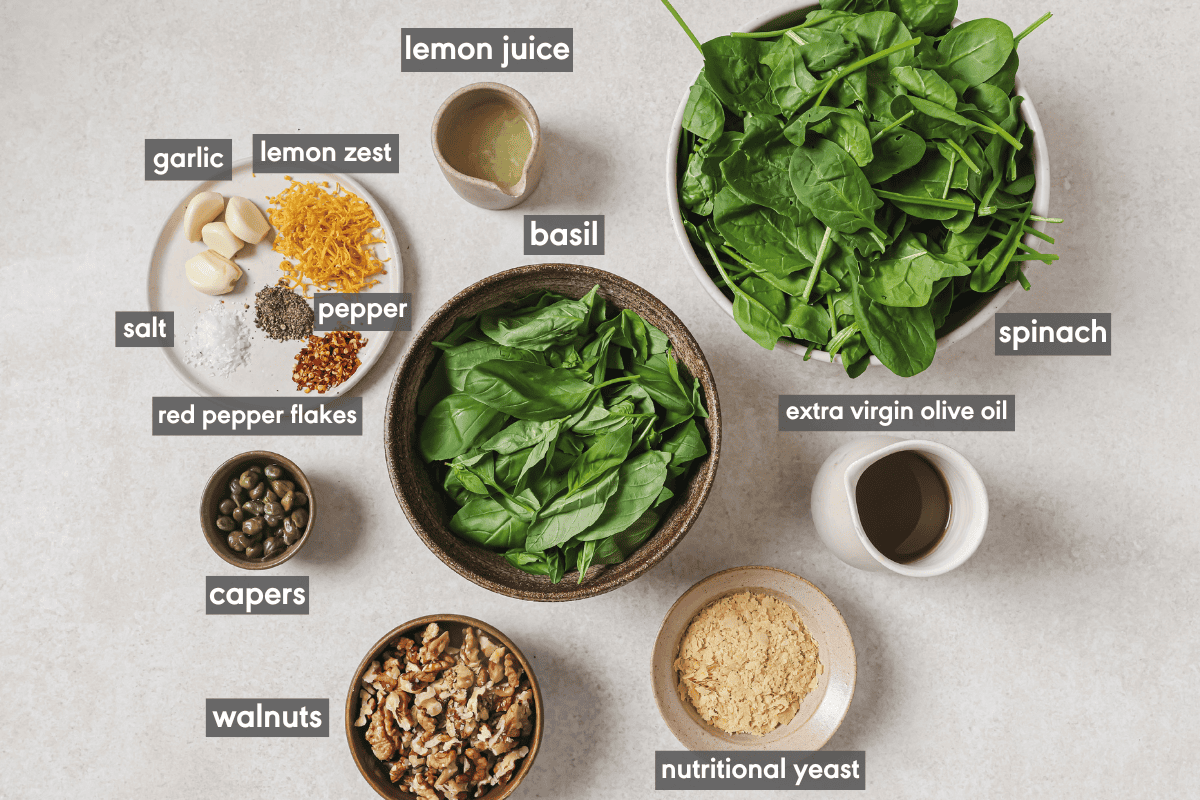
Walnuts
I hope Pesto Purists will forgive me for what I’m about to say: I think of pesto more as a formula rather than a specific recipe (*braces for collective wrath of Italian nonnas everywhere*).
Pine nuts are one of the core ingredients in traditional pesto (you’ll find them in my traditional vegan pesto recipe!) but they can be pricey and I don’t always have them on hand.
So for me, there are three benefits of a walnut pesto:
1. I always have walnuts in the pantry or freezer because we roast them every few weeks during meal prep (instructions in this YouTube video).
2. They are packed with anti-inflammatory omega-3s which support brain and heart health, making them a bona fide superfood.
3. They are soft like pine nuts, meaning they blend well and contribute to the rich, nutty texture of the pesto.
Baby spinach
Cartoon sailor Popeye really did the legwork in terms of convincing the public that spinach is healthy, so there’s not a lot for me to do here on that front. Instead, I’ll say that I love a recipe that allows you to use up an entire bag of baby spinach, so I made this one of those recipes. No need to blanch or sauté it–just dump it into the food processor raw.
Basil
This is where I’m going to start winning back points in the eyes of the Pesto Purists: I use a mix of baby spinach and basil in this recipe. Basil is one of the quintessential flavors of pesto, and I wanted this version to feature that classic flavor.
Substitute: If basil is not in season, I recommend using flat-leaf parsley or a mix of parsley and dill.
Nutritional yeast
Traditional pesto features parmesan, so you would think the best plant-base swap would be vegan parmesan. But nutritional yeast is jam-packed full of umami (when the yeast is deactivated, it produces naturally occurring glutamates, and glutamate is shorthand for umami) and provides a lovely savory, slightly cheesy flavor.
Bonus: Our beloved nooch is packed with protein and nutrients (antioxidants, B vitamins, fiber)!
Extra virgin olive oil
Pesto Purists, I’m confident I’ll win you over with this take: every pesto needs extra virgin olive oil. It takes pesto from a gritty herb paste into a luxurious, spoonable sauce.
Tip: Since the olive oil isn’t being cooked and will lend its full flavor to the pesto, this is an occasion to break out your best-quality olive oil. In applications like this, I typically reach for Brightland olive oil or Bono Sicilian Olive Oil.
Lemon
Lemon zest adds a zippy floral brightness that puts a pep in the step of pesto. And the acidity in the lemon juice beautifully brightens the walnuts and spinach.
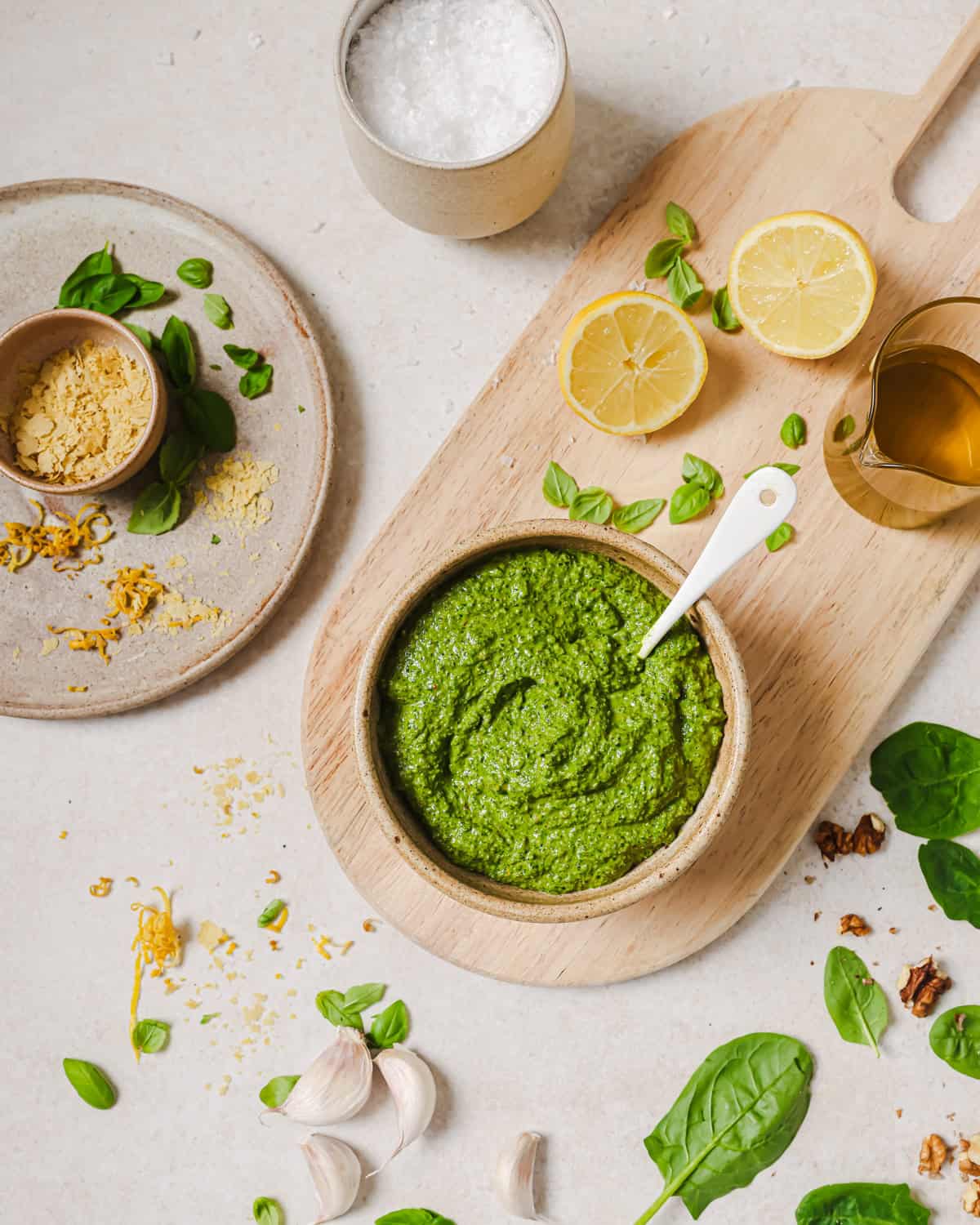
Step-by-step instructions
In a dry skillet over medium-low heat, toast the walnuts for 4 to 5 minutes, stirring from time to time, until toasty in aroma and a few shades darker.
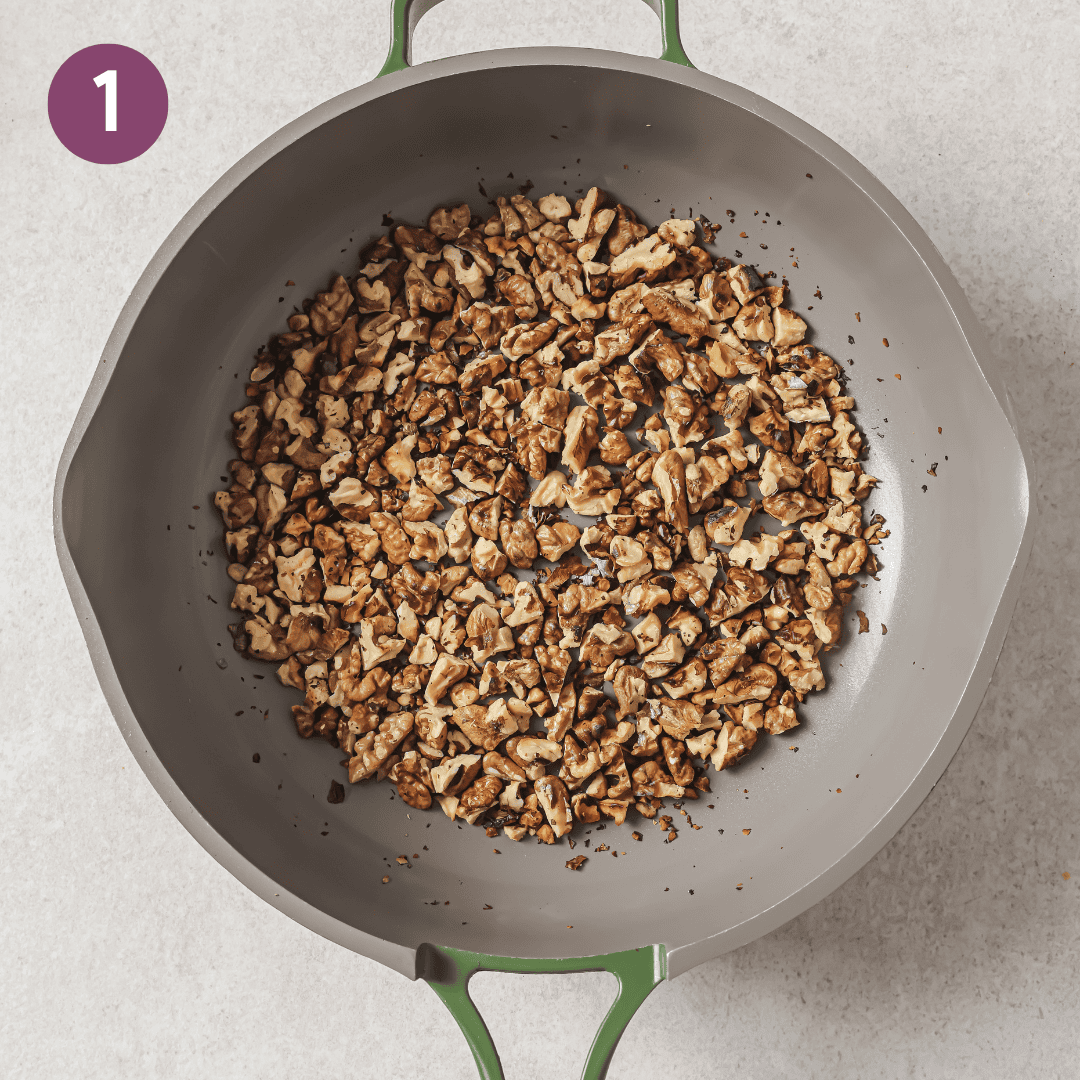
Add the toasted walnuts and garlic to a food processor. Pulse into a fine crumb.
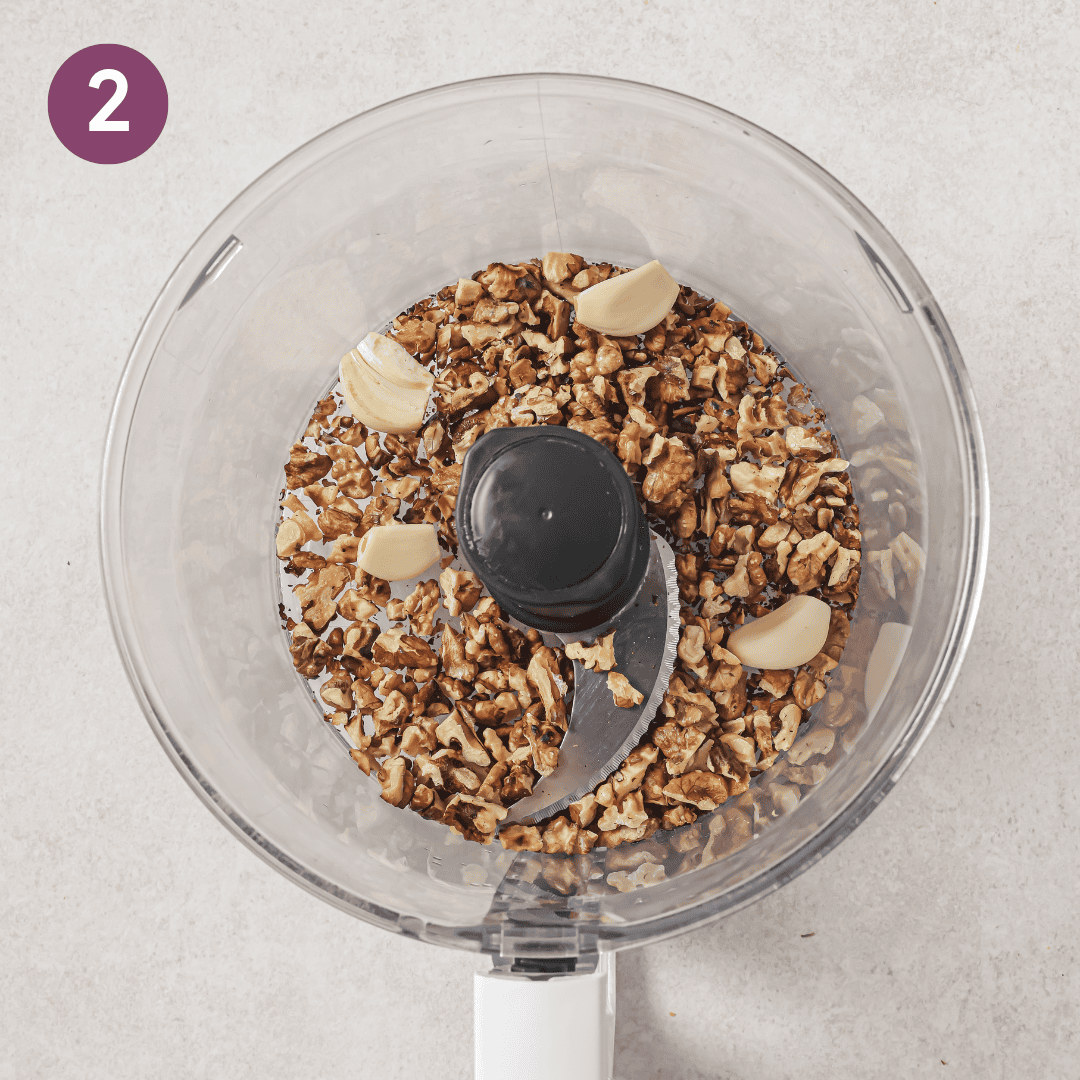
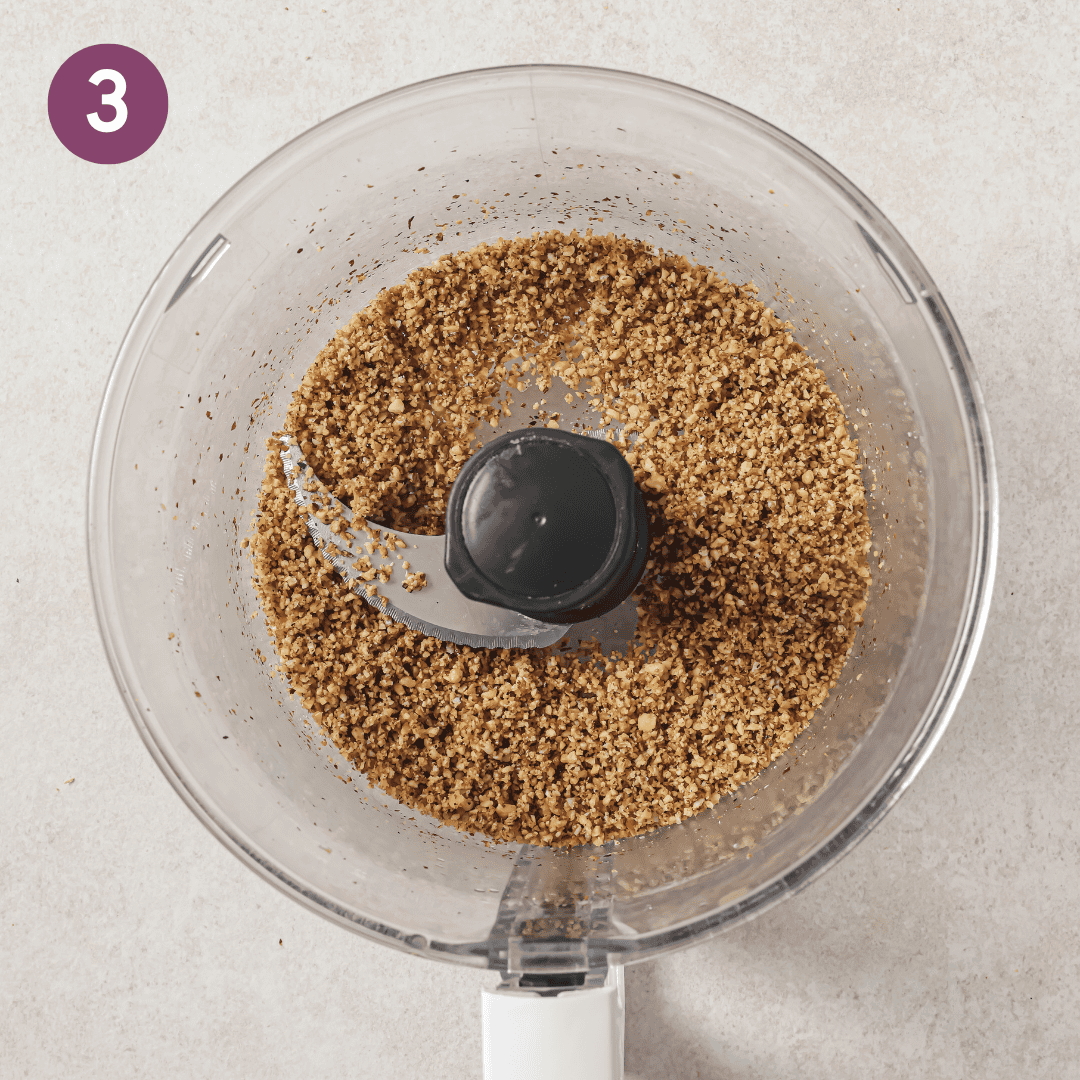
Add the spinach and basil to the food processor and blitz until you have a coarse paste, adding in batches as needed.
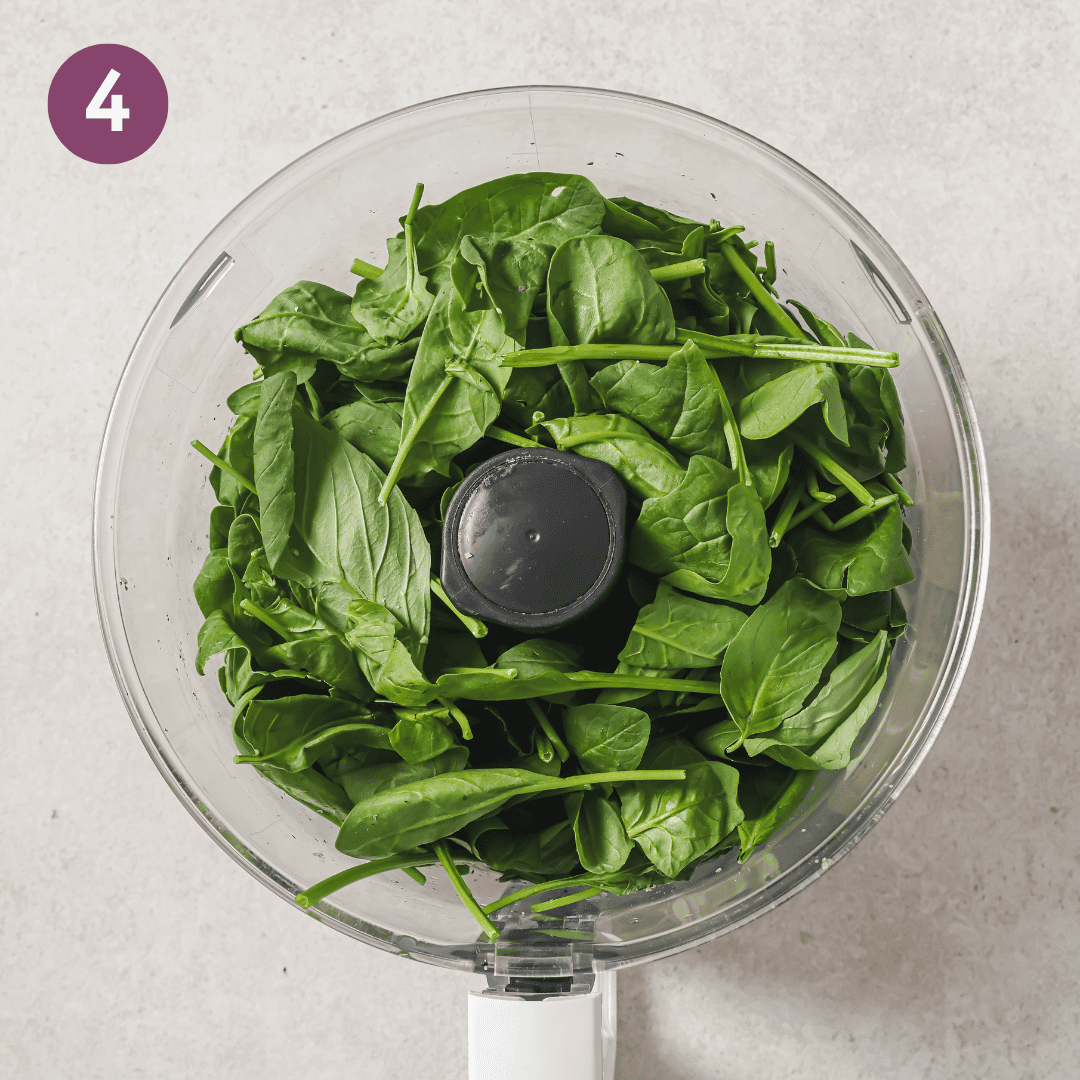
Add the nutritional yeast, lemon juice + zest, chili flakes (if using), and salt and pepper and blend into a paste.
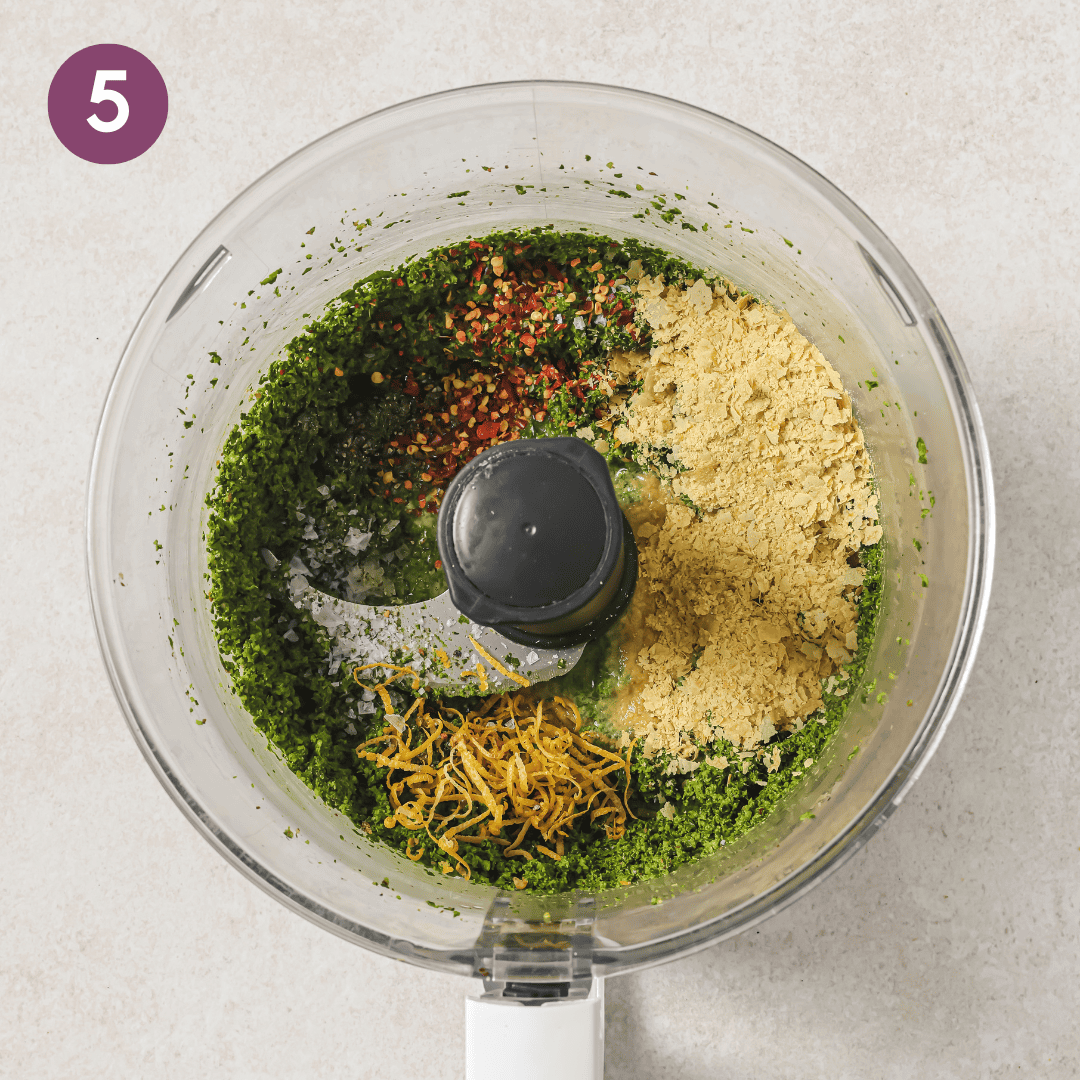
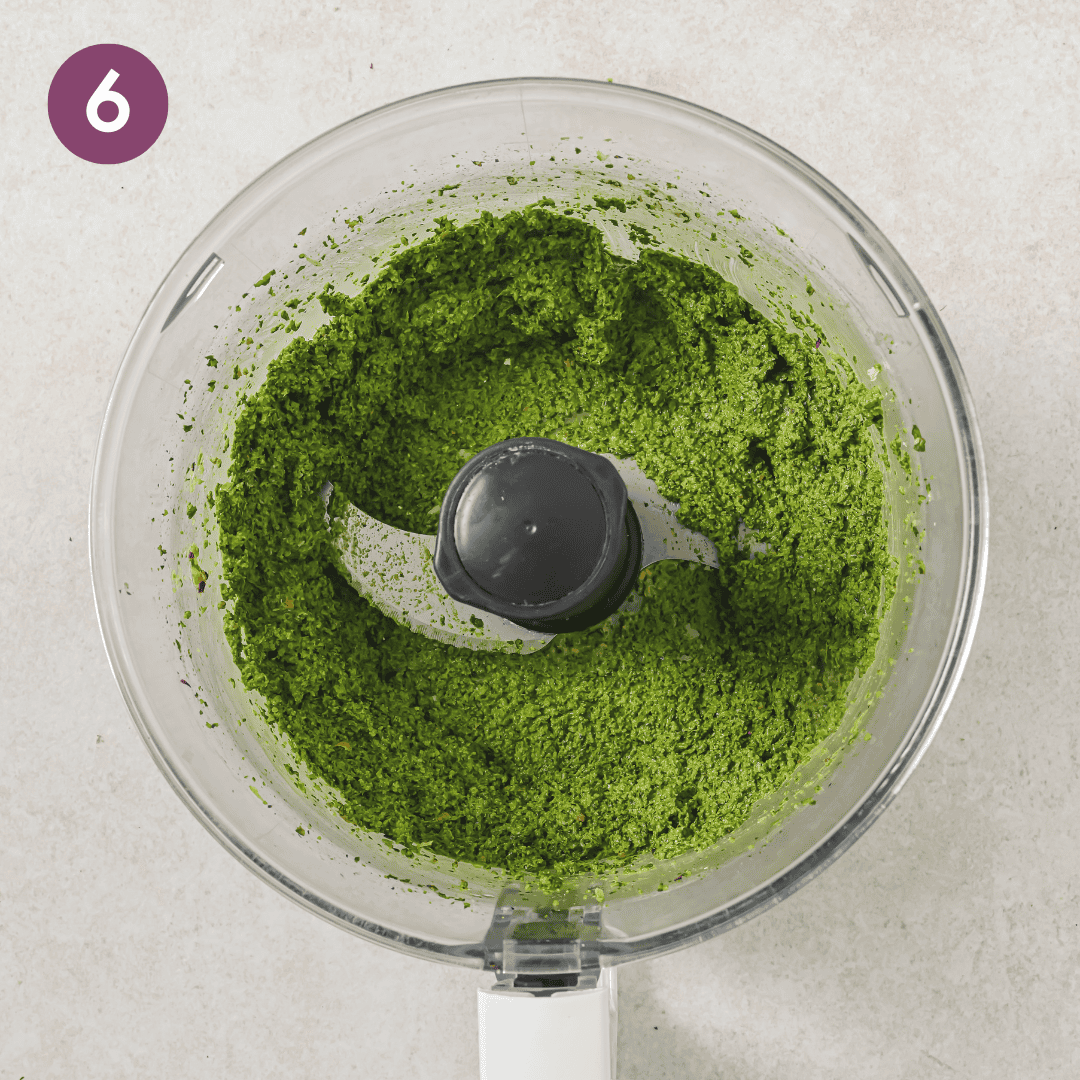
With the food processor running, stream in the olive oil until the paste becomes a thick, spoonable sauce. If using the capers, pulse them in now. Taste and adjust salt, lemon, and olive oil accordingly.
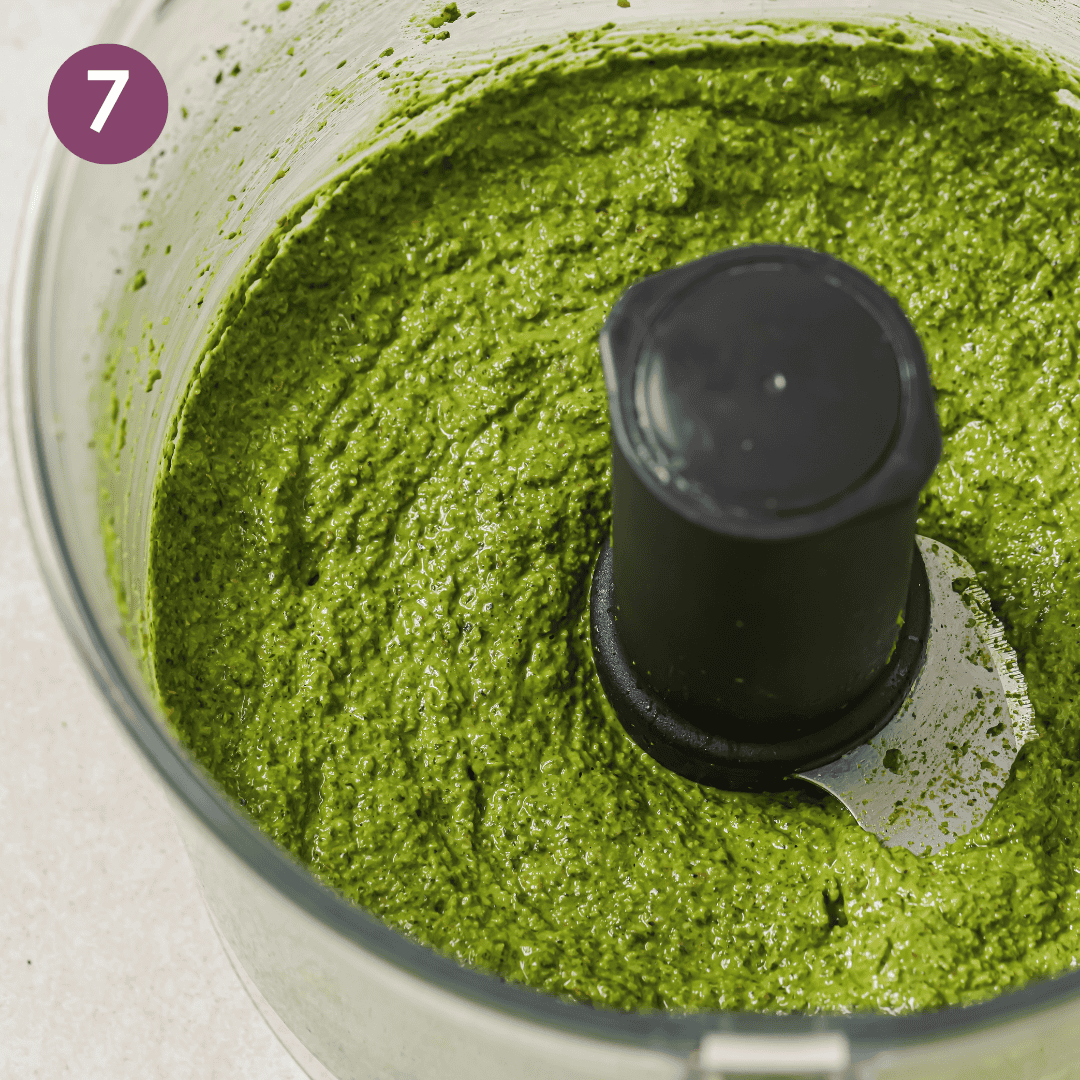
Tips for making spinach pesto
Always toast the nuts
I get it–this is the step you’re going to want to skip. It feels like a whole thing.
But if you take only one thing away from this blog post, let it be this: toasting walnuts is transformative.
• It brings out the nut’s essential oils, giving them a much more complex flavor profile which translates to more nuanced pesto.
• Walnuts can be slightly bitter raw (I refuse to eat them raw). Roasting them dials up their innate umami flavor and dials down the bitterness.
• It takes 5 minutes to do, and wiping out the pan takes 10 seconds. Easy and quick!
If Nike hadn’t beaten me to the punch, I’d be spearheading a global campaign for Toasting Nuts: Just Do It.
ALWAYS TOAST THE NUTS
…Sometimes we need to read things twice to fully internalize them. I’m not kidding about toasting the nuts. Spend the time and, I guarantee, you will be handsomely rewarded for your effort.
Halve the recipe, if needed
This recipe makes quite a lot (over 2 cups / about 500g), so if you’re cooking for just one or aren’t sure you’ll eat it all within a week, feel free to have the recipe!
Or, feel free to freeze the pesto for several months!
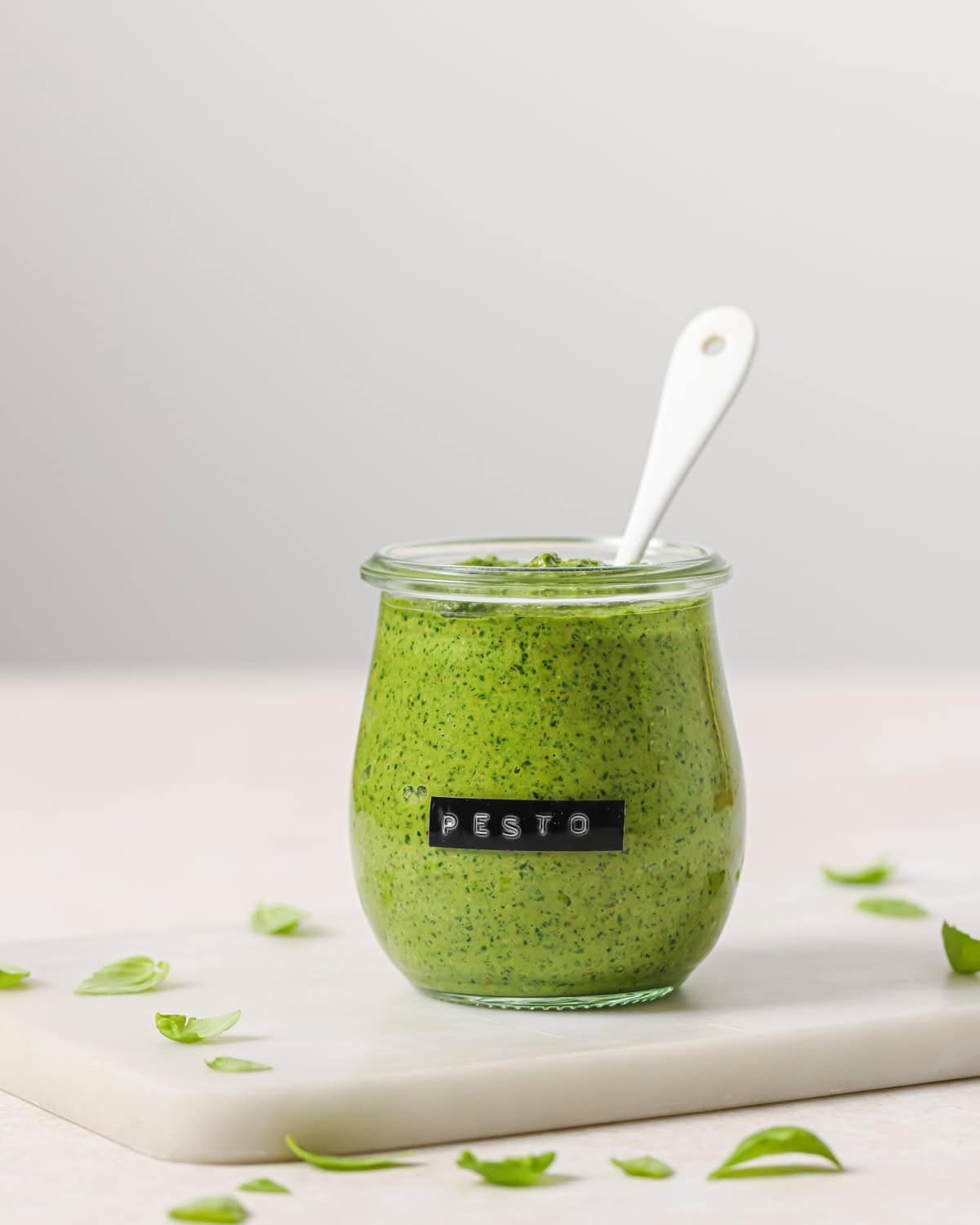
How to customize this spinach pesto
If any of the following sentences occurred to you while reading this blog post, here are my corresponding tips so you can still make your pesto the best-o.
“I hate walnuts.”
You’ve got options–use pine nuts, as in traditional pesto, or half pine nuts + half walnuts for a more classic pesto vibe. You could also sub cashews or pistachios (speaking of which, check out my Mint-Pistachio Pesto recipe, page 178 of Big Vegan Flavor for a very fun pesto spin).
The only nuts I don’t recommend using are almonds, since they’re a crunchy, firm nut and will not blend as well into the pesto.
“I’m allergic to walnuts.”
Use 1 cup (140g) pepitas. Just be sure to toast them first–you can use the same instructions for the walnuts listed in the recipe card, but no need to chop the pepitas.
“I have all this baby kale and zero spinach.”
Use it! Just blend it with the nuts and the garlic, in the first blitz, because it has a tougher texture than spinach.
“I don’t want to use olive oil.”
I’m going to have to stand firm on this one–at least some olive oil is a must in pesto. Without it, it’s just herb paste.
If you want to use less oil, you can replace half of it with some ripe avocado or, for a slightly lighter pesto, use ⅓ cup (75g) of olive oil and stream in 2 tablespoons of water.
“I can’t tolerate spice.”
No worries–the recipe includes red pepper flakes for a subtle kick, but just leave them out!
“I can’t get ENOUGH spice.”
Add in half or a whole jalapeño or serrano pepper and thank me later ❤️🔥
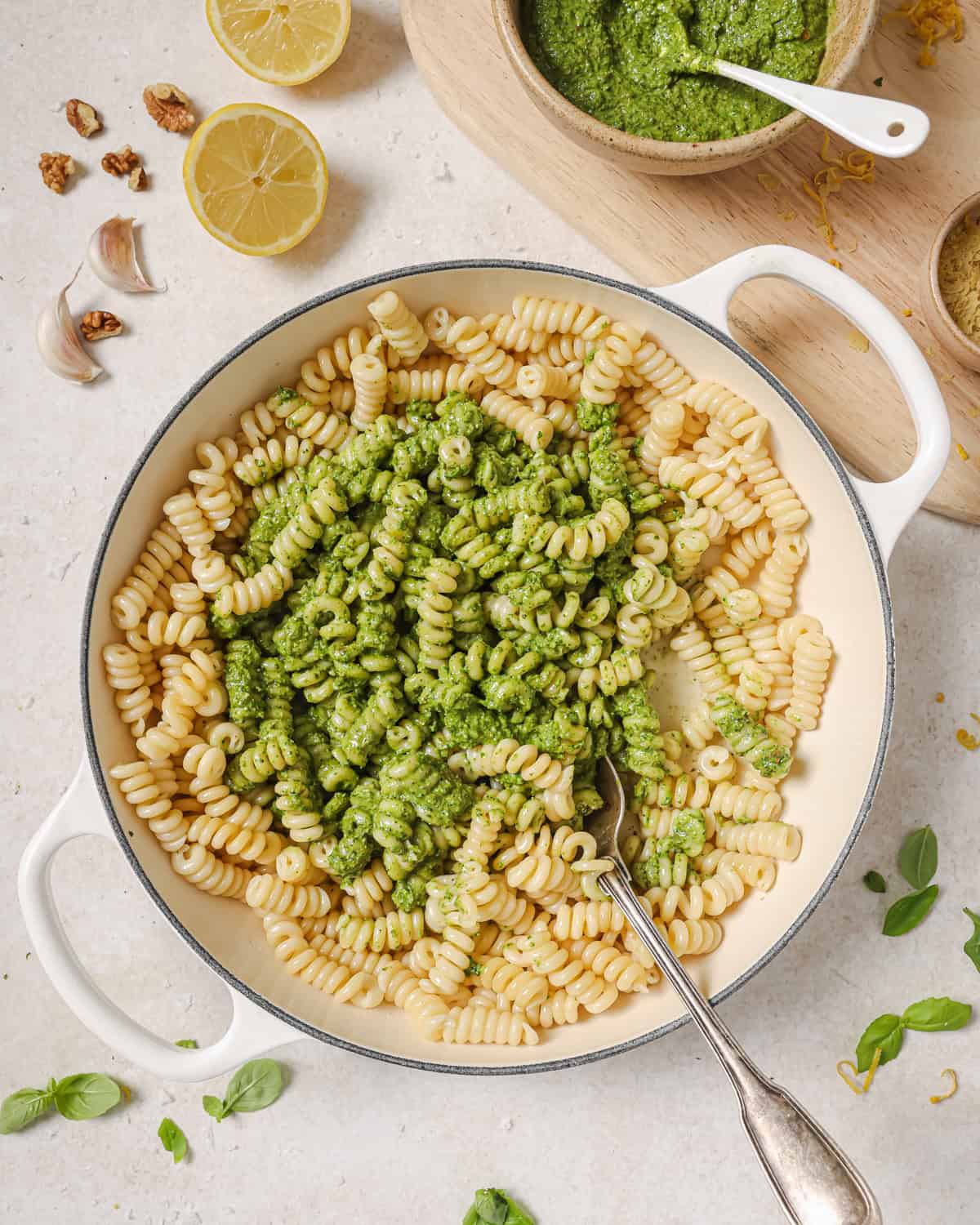
Frequently Asked Questions
Absolutely! In fact, this pesto’s make-ahead-ability is one of the reasons I love it for meal prep. Make a batch and store it in a sealed jar or airtight container in the fridge–it will stay good for up to one week.
Yes! It’ll stay good in the freezer for 3 to 4 months!
For easier defrosting, store the pesto in small quantities. I love to spoon the pesto into these Souper Cube 2-tablespoon trays and, when the cubes have frozen, I pop them into a freezer-safe bag.
They become little flavor nuggets that you don’t even have to defrost in many scenarios–just swirl one into hot soup or a pot of beans!
However, if you need to freeze a large amount of pesto in one container, I suggest covering the surface of the pesto with a thin layer of olive oil before sealing the container and freezing–this will reduce browning.
No nuts, no problem! Substitute 1 cup (140g) pepitas–but toast them first! Use the same method described in the recipe card for toasting the walnuts.
An easy guideline is: anywhere you’d use traditional pesto! And some more fun ideas below.
• As a sauce for homemade pizza or flatbreads
• With pasta, obviously!
• In wraps with your favorite protein and veggies
• As a dip for crudités
• Stirred into soups or beans. It’s fantastic stirred into this White Bean Soup.
• Spooned over roasted vegetables, especially cauliflower and broccoli
• As a base for baked tofu with salad on top
• Spooned over a summer tomato salad
• On tofu-ricotta toast with tomatoes (as seen in my YouTube video–I use my traditional vegan pesto in the video, but this spinach pesto would be just as good!)

If this spinach pesto seriously leveled up your meal-prep game the way it did mine, leave a rating and review below! I always love hearing from you. 😊
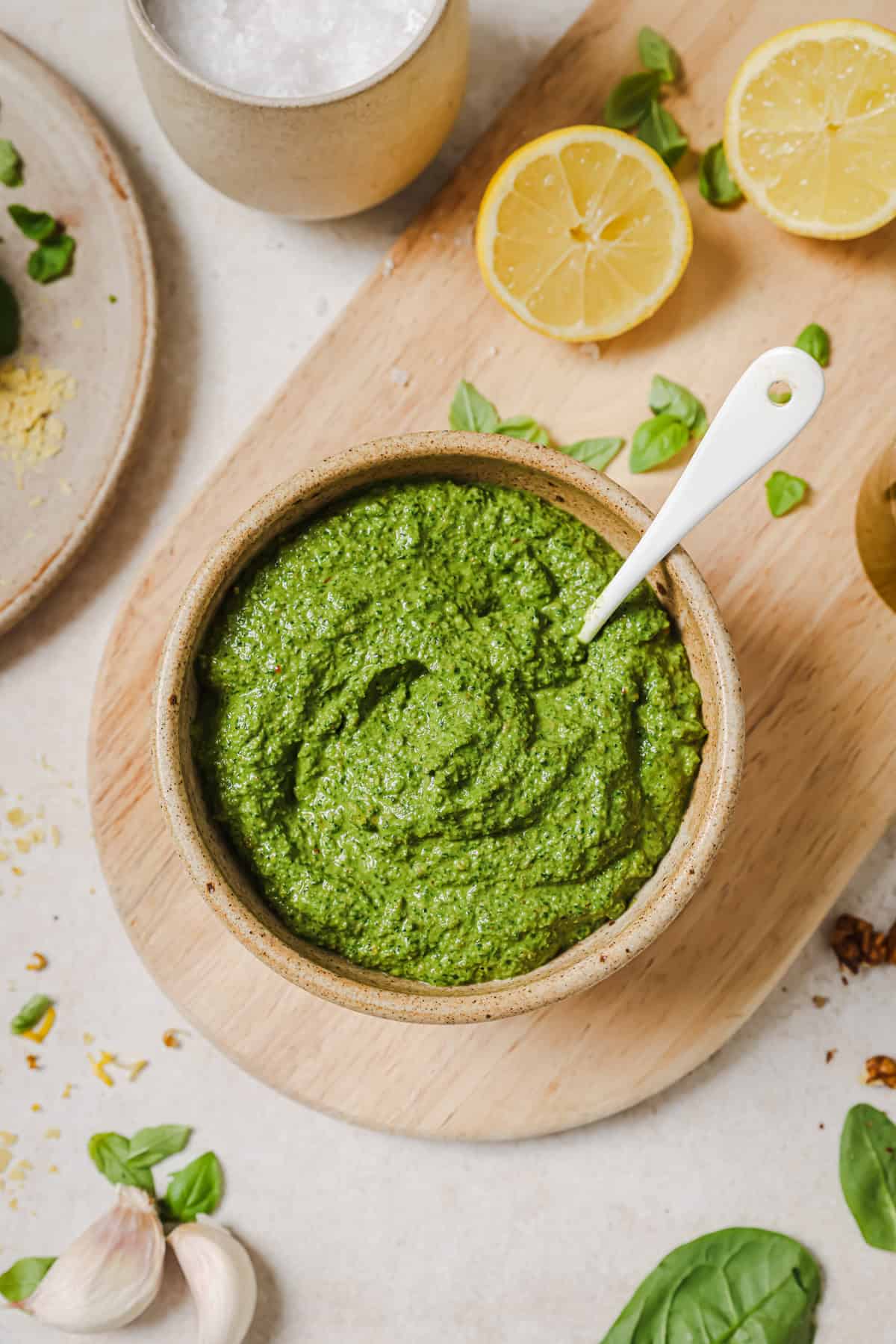

Big Vegan Flavor
Techniques and 150 recipes to master vegan cooking.

Introducing
Big Vegan Flavor
Techniques and 150 recipes to master vegan cooking.
Spinach Pesto
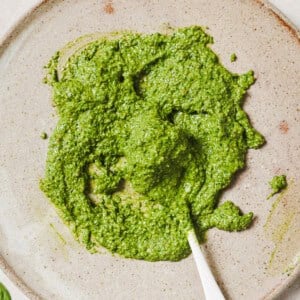
Ingredients
- 1 cup (112g) walnuts, broken into pieces (or pine nuts) (see Note 1)
- 4 cloves garlic, roughly chopped
- 5 ounces (140g) baby spinach
- 4 loosely packed cups (50g) fresh basil leaves
- 2 small (or 1 large) lemons, zested + 4 tablespoons (60 mL) juice
- Kosher salt and freshly cracked black pepper
- ½ teaspoon red pepper flakes (or 1 to 2 teaspoons Aleppo pepper) (omit or reduce for very mild heat)
- ¼ cup (20g) nutritional yeast
- ½ cup (112g) extra virgin olive oil (see Note 2)
- 1 to 2 tablespoons capers, drained (optional)
Instructions
- Toast the nuts: Heat a large dry frying pan over medium-low heat. Once hot, add the walnuts and toss from time to time, until they smell nutty and are darker by a few shades, 4 to 5 minutes (see Note 3).
- Add the toasted nuts and garlic to a food processor. Blend until you have a fine crumb (but not a paste). Add the spinach and basil, pressing down as needed to fit. Blend until you have a coarse paste, scraping down the sides as needed.NOTE: If your food processor is smaller, do this in two batches.
- Add the lemon zest, 4 tablespoons (60 mL) lemon juice, 1 teaspoon kosher salt (or half amount sea salt), a few cracks of black pepper, chili flakes if using, and nutritional yeast. Blend until a paste forms, scraping down the sides as you go. With the motor running, stream in the extra virgin olive oil until it forms a thick sauce. If using, add in the capers and pulse a few times to incorporate.
- Taste, adding more salt or lemon juice as needed. If your basil isn’t the best quality, you may need to add a pinch of sugar. NOTE: the consistency may be a bit thicker and creamier than classic pesto.
- Store pesto in a large sealed jar in the fridge for about 1 week. Or, freeze in ice cube trays; once set, transfer to a freezer-safe bag and freeze for 3 to 4 months.
Notes
- If nut free, use 1 cup (140g) pepitas. Toast using the method in step 1.
- For a slightly lighter pesto, you can use ⅓ cup (75g) of olive oil, and stream in 2 tablespoons of water. Or, replace half of the olive oil with some ripe avocado.
- If you want to toast a larger batch of nuts, feel free to do this in the oven for more even and hands-off toasting. Spread the nuts out on a sheet pan and roast in the oven at 350°F / 175ºC for 8 to 10 minutes, tossing halfway through. Once cooled, store leftover roasted walnuts in a jar in the pantry for 1 to 2 weeks.
Nutrition
Nutrition information is automatically calculated, so should only be used as an approximation.


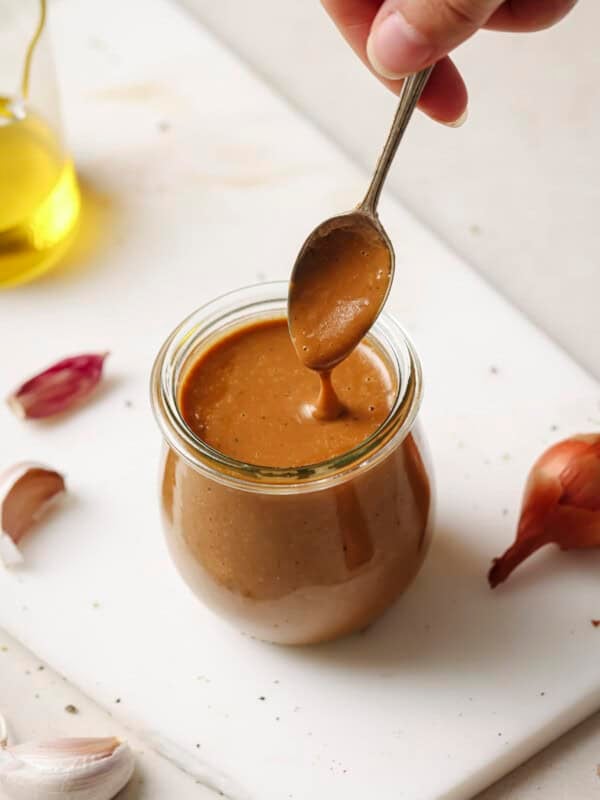
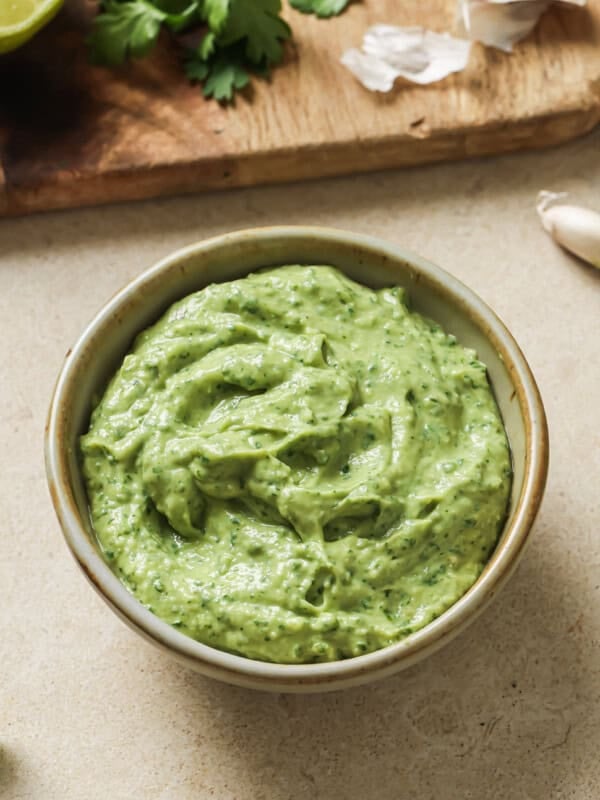

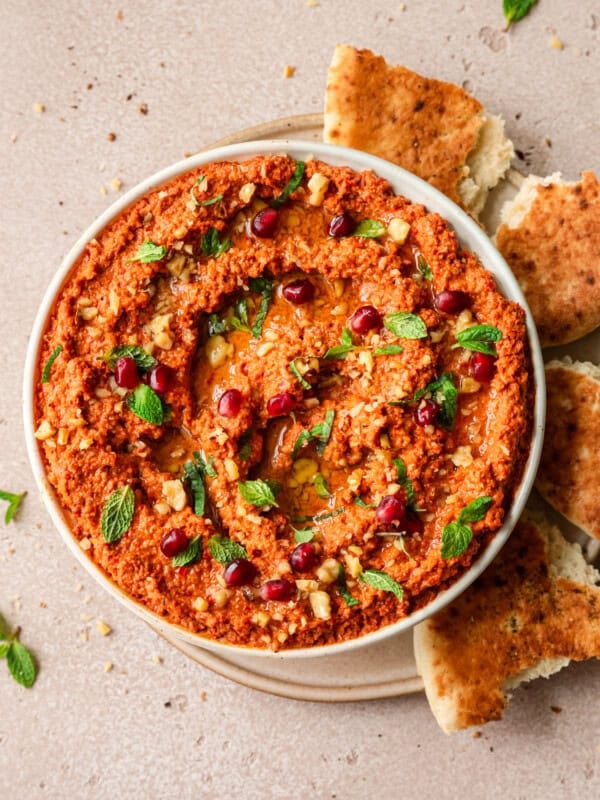









Great idea! I made it with significantly less oil (maybe 2T) and a splash of soy milk, and it was great! I just added some of it to a dish of saucy butter beans + pickled peppers, and it’s pretty addictive.
That meal sounds divine, Tamara! Thanks for sharing!
This was just fantastic. No one at the dinner table knew they were eating spinach (or walnuts for that matter). I just told the family I was making pesto gnocchi and they gobbled it up. Definitely going into the rotation.
That’s brilliant, Stanley! Thanks for taking the time to leave a review!